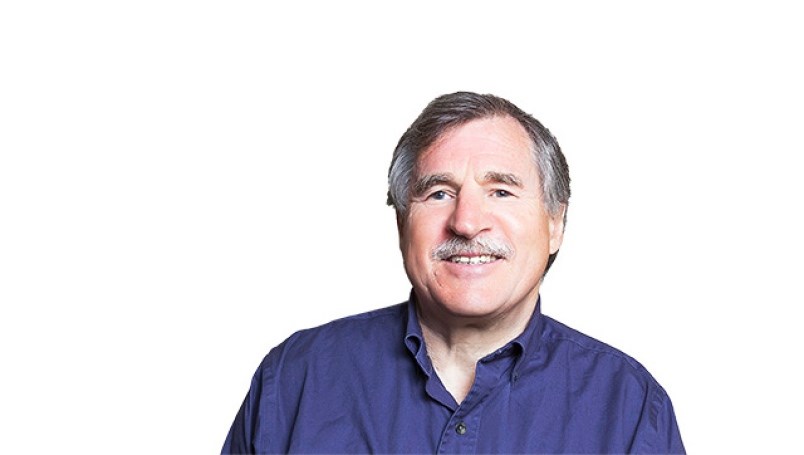As June is National Indigenous History Month, it’s worth having a look at how our community has been faring at the long, complicated task of reconciliation.
Following the Final Report of the Truth and Reconciliation Commission in 2015, the Federal Government announced that a total renewal of the relationship between Canada and this country’s Indigenous peoples was required based on recognition of rights, respect, truth, co-operation, and partnership. How is that five-pronged paradigm shift playing out at the grass roots level here in Squamish?
One of the ongoing objectives of the District of Squamish and various community stakeholders is strengthening their connection with the Squamish Nation by establishing a broad range of mutually beneficial arrangements and ventures. In 2014 Squamish Nation member Tsawaysia Spukwus (Alice Guss), a highly regarded public speaker, Indigenous culture workshop leader and innovative teacher, was invited to join the Squamish branding leadership team. That assembly included delegates from Tourism Squamish, the Squamish Chamber of Commerce, and the Downtown Squamish Business Improvement Association. One of the outcomes of those deliberations was a new municipal logo featuring the “Eye of the Creator” icon representing the Squamish Nation’s traditional connection with the natural world around us
In 2016, the first mass, cross-jurisdictional exercise to practice and validate key competencies of the District of Squamish and the Squamish Nation evacuation plan was activated. The provincial Liberal government’s minister for emergency preparedness, Naomi Yamamoto, said, “It is the work of innovators like the District of Squamish and the Squamish Nation that will truly help to move the dial on safety and preparedness for our citizens.”
Recently, the District partnered with the Nation to endorse a new dike alignment between the Siyich’em Reserve and Íkwikws Reserve in Brackendale. The upgraded configuration returns land taken from the Nation when the original structure was built. Orene Askew, who at the time was a Squamish Nation councillor and spokesperson, said “As a Nation, we have learned that dike alignment can have a severe impact on our community spanning generations, so the decision to move forward with the preferred alignment is a significant one. Though the selected option does not recapture all of the original reserve area, it does allow us the opportunity to recover some of the land lost. We are one step closer to correcting a past wrong.”
In 2018, the Squamish Nation council approved economic benefit agreements with Woodfibre LNG, FortisBC and the province, contingent on several environmental conditions that Woodfibre will have to meet before the project can proceed. The long-term deal with potential benefits of $1.1 billion for the Nation includes cash payments totalling $225.65 million, 1,600 short-term and 330 long-term jobs, business opportunities and land transfers of 422 hectares. As well, the Nation has partnered with several other major commercial enterprises in Squamish, including the 100-acre Oceanfront Squamish development, the Garibaldi at Squamish four season resort, and the Cheekeye Neighbourhood development in Brackendale.
Two years ago, the District of Squamish launched the Economic Partner Forum as part of a new governance approach for Economic Development composed of representatives from 11 affiliated parties, including representatives from the public and private sectors, not-for-profits, and the Squamish Nation. According to a District announcement, the voluntary association will provide “a collaborative framework to share expertise, knowledge and resources in an effort to fulfill…economic development strategies, plans and actions outlined in the District of Squamish 2019 — 2022 Strategic Plan.”
Additionally, the Squamish Nation and the District have signed a historic agreement that establishes a Squamish Community Forest governance arrangement to transfer control of approximately 10,000 hectares of forest land to the Nation. Planning is also underway to engage the Nation in the Squamish Marine Access Review process.
On another front, at the most recent Quest University graduation proceedings, hereditary Squamish Nation Chief Pekultn Siyam (Dale Harry), Quest’s longest serving board member, was announced as chancellor of the university. His mother, Chésha7 (Gwen Harry), was presented with an honorary doctorate. She is a lifelong Squamish Nation culture and language advocate and teacher who served on the advisory board of the Howe Sound Educational Foundation, an organization that helped pave the way to the launch of Quest University. In 2018, she and Squamish Nation elders Kiyowil (Bob Baker) and Humteya (Shirley Toman) were the recipients of the District’s highest honour, the Freedom of the Municipality designation, “for their courageous and inspiring work sharing their experiences as residential school survivors.” Those efforts facilitated the collective healing process and path to reconciliation among both Indigenous and non-Indigenous community members.
All told, the scope of the Squamish Nation inclusivity commitment initiated by the District of Squamish and other associations has been significant. It ranges from the symbolic to the substantive, from acknowledging before every session of council that the meeting is taking place on traditional Skwxwú7mesh land, to precedent setting shared enterprises, agreements and acts of recognition. That legacy of co-operation highlights the success of this community’s reconciliation strategy and bodes well for the future.




